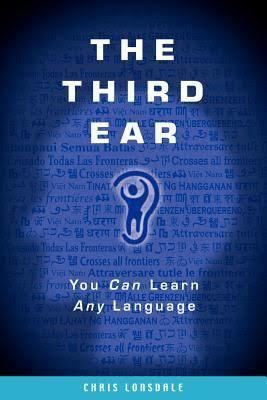7.4 /10 1 Votes
Publisher Third Ear Books Media type Print (Paperback) ISBN 988-98887-0-X Page count 183 Country Hong Kong | 3.7/5 Goodreads Publication date April 5, 2007 Pages 183 Originally published 5 April 2007 Original language English Subject Language acquisition OCLC 68968815 | |||||||||||||||||||||||||||||||||
 | ||||||||||||||||||||||||||||||||||
The Third Ear is a book by Chris Lonsdale analyzing human attitudes towards language learning learning with an emphasis on the habits of polyglots. Starting as a native English speaker, this summary of their habits is coupled with his own experience of learning two Chinese dialects, Mandarin and Cantonese. It was released in January 2006 and reprinted in 2007.
Contents
Overview
The Third Ear begins with an introduction, that is followed by three sections. The introduction challenges the myth that language learning is “difficult” and outlines the way in which Lonsdale believes readers should use the book.
Section 1 explores in greater depth some of the myths that surround language learning and discusses alternative viewpoints to these myths. This section also introduces some natural techniques that humans use to process language, in order to support the alternative viewpoints.
Section 2 deals with the specific approaches used by polyglots in their approach to language learning. Lonsdale summarizes their approach to (for example) remember massive amounts of new information, and training themselves to sound more and more like a native speaker.
Section 3 introduces more advanced techniques used by polyglots. While Section 2 was more practical, this section has more to do with the way polyglots think. For example, rather than follow the commonly held belief that “children are better at learning languages than adults”, Lonsdale explains how polyglots actively use their Adult Advantage.
Throughout the book, Lonsdale introduces a number of key ideas related to the polyglots, and his own, experience of learning language. Some of the ideas include:
Communicate, don’t Grammarate
Lonsdale recommends learners to ignore the study of grammar and focus simply on making themselves understood.
Glue Words
This idea recommends learners to identify the 100 most commonly used words in any language, and master those first.
Find a Language Parent
Stressing that all parents are natural teachers (of their children), Lonsdale recommends learners to find for themselves a language parent who can play a similar role in their acquisition of a second language.
Articulate a clear Goal
Lonsdale argues that having in mind a clear goal will help the learner in their acquisition of a new language. Warning against the goal of speaking "perfectly", Lonsdale instead urges learners to focus on becoming “just like a native", since even native speakers of a language rarely speak “perfectly".
Book jacket
The image on the cover of a man "inside" a human ear is a metaphor for the book's title, The Third Ear. It was designed by Daniel Choi and Andrew Mok in Hong Kong in Late 2005.
